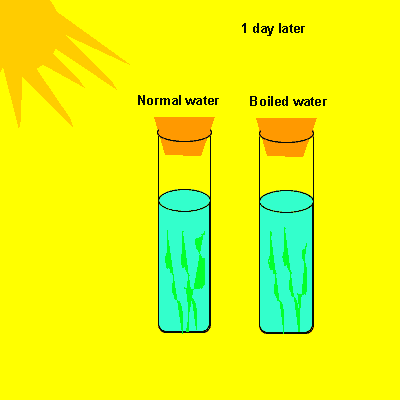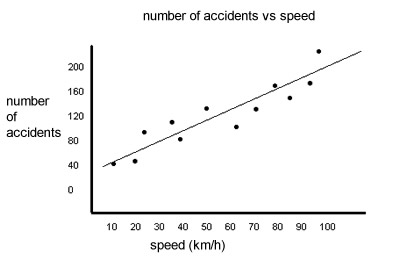|
Irene was asked to design a
controlled
experiment to answer the question "Can water that
had previously been boiled for at least ten minutes sustain life?"
A controlled experiment is one in which only one variable
is allowed to change from one test to another.
Click for an example of how the words
control and variable are used in a scientific investigation.
Lets see. What are the variables in this experiment?
1) Size of test tube
2) Amount of water in both test tubes
3) Types of plants used and their size and health.
4) Amount of sunlight each receives.
5) The type of water (previously boiled or not) used.
In an experiment we have three
types of variables, the independent, the
dependent variables and extraneous variables. An independent variable is
changed by the experimenter and the dependent variable changes as a result
of changes made to the independent variable. When graphing results the dependent variable is always represented by the y-axis while the independent variable is represented by the x-axis.
Simply put the independent variable is what is changed while the dependent variable is what is measured or changes.
Extraneous variables are variables that influence the outcome of an experiment but are not the variable that we are interested in. For example, a student wished to see whether a particular sports drink can increase performance. The student placed people into two groups, one is given the sport drink and one is not while performing the same exercises. Heart rate is then measured. An extraneous variable might be the average fitness of each group. If one group happened to have fitter people in it then the results would be distorted due to fitness rather than the sports drink.
We collect data by measuring
the changes to the independent variable.
The independent variable in this experiment is the water. One test tube
has water that had been previously boiled and the other has normal tap
water. The dependent variable here is the length of the plant.
Notice how all other variables remain the same in each test tube. For
example:
-The same amount of water is used for both test tubes.
-The same type of plants of identical starting length are used.
-Identical periods of sunlight for both test tubes.
-Identical test tubes are used.
Let's see how she conducts
her experiment. |

